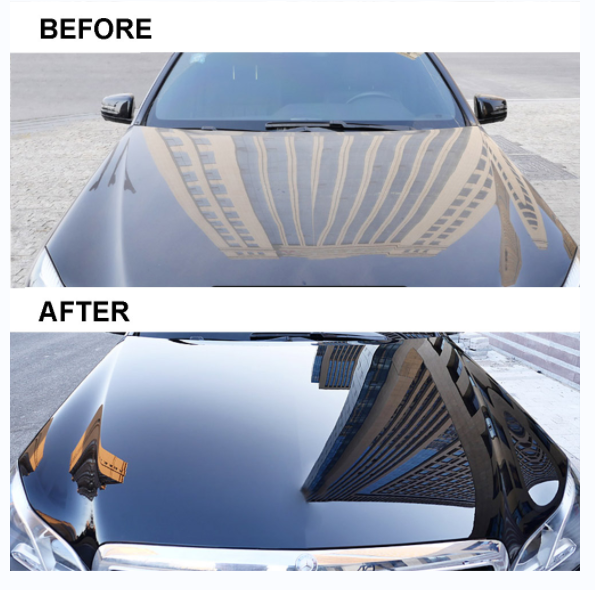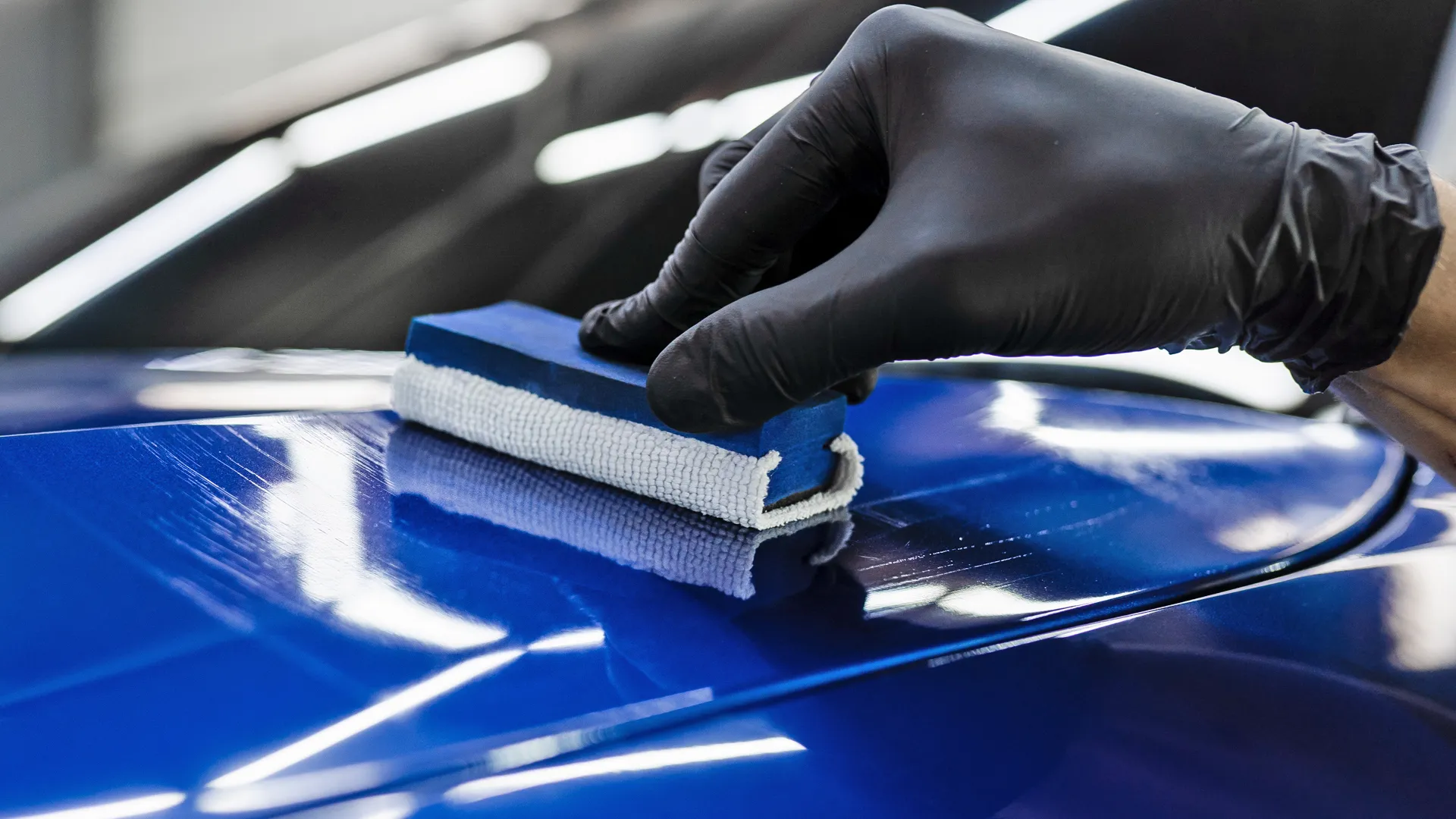Ceramic Layer vs. Conventional Wax: Which Gives Much Better Long-Term Protection?
The debate in between ceramic finishings and conventional wax for lorry protection has actually garnered considerable focus among automobile fanatics and specialists alike. While both satisfy of guarding paint, their differences in sturdiness, application, and long-lasting upkeep prices may affect a consumer's choice. Ceramic coatings flaunt premium durability and resistance to ecological aspects, yet the intricacy of their application questions concerning accessibility and practicality. As we check out these contrasting choices, it comes to be necessary to take into consideration not only the immediate benefits however also the implications for vehicle treatment gradually.
Overview of Ceramic Finishing
Ceramic layer has actually obtained considerable popularity amongst automotive fanatics and detailers alike due to its sophisticated safety high qualities. This cutting-edge innovation is designed to develop a sturdy, hydrophobic shield over a lorry's paint surface area, considerably improving its resistance to ecological pollutants such as dust, UV rays, and chemical discolorations. Unlike typical wax, which offers a momentary layer of defense, ceramic coverings bond at a molecular degree with the paint, supplying resilient durability-- commonly prolonging beyond 2 years with proper maintenance.
The application process includes thorough prep work of the lorry's surface area, including cleansing and polishing to make sure optimal bond. When applied, the layer cures to form a robust layer that not just includes deepness and gloss to the paint but likewise streamlines maintenance. With its hydrophobic residential or commercial properties, ceramic covering permits water and dust to move off more conveniently, minimizing the regularity of washes and lessening the threat of swirl marks.
In addition, ceramic finishes are readily available in various formulations, enabling individuals to choose products customized to their specific demands and preferences. On the whole, ceramic coating represents a significant improvement in paint defense technology, delivering premium efficiency contrasted to traditional alternatives.
Summary of Typical Wax
Commonly considered as a staple in automobile care, wax works as a prominent option for those seeking a simple approach to improve and shield their vehicle's paint - ceramic coating. Automotive wax generally consists of natural active ingredients, such as carnauba, or synthetic compounds, made to produce a protective layer externally of the paint. This layer not just improves the vehicle's gloss and radiate but also offers a barrier against environmental impurities
The application of wax is generally easy to use, making it easily accessible for both experts and Do it yourself lovers. As soon as used, wax needs a curing period, after which it hardens to form a protective shell.
Nonetheless, while wax works for boosting the visual allure of a car, it is necessary to note that the protection it uses may require more frequent reapplication contrasted to alternative items, such as ceramic layers. On the whole, typical wax stays a preferred alternative for those prioritizing ease of use and instant aesthetic improvement.
Longevity and Durability Contrast
While both ceramic layers and conventional wax offer safety advantages for auto paint, their resilience and longevity differ dramatically. Traditional wax, generally made from all-natural carnauba or artificial polymers, normally provides a safety layer that lasts around three to 6 months. This fairly short life expectancy requires routine reapplication to keep optimum defense.
In comparison, ceramic layers are engineered from advanced nanotechnology, forming a covalent bond with the paint surface. This causes a robust, hydrophobic layer that can endure for two to 5 years, relying on the item and ecological problems. The exceptional toughness of ceramic finishings is associated to their chemical structure, which supplies enhanced resistance to scrapes, UV rays, and oxidation.

Defense Versus Ecological Aspects
Shielding an automobile's paint from ecological factors is essential for maintaining its appearance and worth gradually. Cars are frequently exposed to a range of components, including UV rays, bird droppings, tree sap, acid rain, and road gunk, all of which can jeopardize the stability of the paintwork.
Ceramic coverings supply a durable defense against these environmental assailants. Unlike conventional wax, which can deteriorate quickly under UV exposure, ceramic layers develop a long lasting, hydrophobic layer that stands up to the harmful effects of sunshine and toxic wastes. This advanced technology produces a chemical bond with the car's surface area, offering premium security that lasts for several years, even in rough conditions.
In contrast, ceramic coatings preserve their safety high qualities longer, significantly decreasing the risk of paint damage and making sure that the automobile maintains its visual allure. As an outcome, ceramic coverings are increasingly recognized as the exceptional selection for long-term protection against environmental aspects.
Application and Maintenance Distinctions
The approaches of application and subsequent maintenance for ceramic layers and standard wax differ significantly, impacting the general user experience and performance of each item. Ceramic finishings require a more detailed application procedure, usually entailing surface area prep work that consists of cleaning, sanitizing, and polishing the vehicle. Once the surface area prepares, the ceramic finish is applied in a regulated atmosphere, often requiring expert know-how to make certain appropriate curing and bonding to the paint.

While both items boost car appearance, the longer-lasting protection provided by ceramic coverings may warrant their initial financial investment, in spite of the more demanding application procedure. On the other hand, standard wax remains a prominent selection for those looking for an easier, albeit temporary, service.

Verdict
To conclude, ceramic coatings demonstrate substantial advantages over standard wax in terms of sturdiness and ecological security. With a life-span extending two to 5 years and remarkable resistance to UV rays, dust, and chemical discolorations, ceramic finishings use an extra effective service for long-lasting vehicle upkeep. The application procedure may call for specialist proficiency, the resulting cost financial savings and reduced regularity of reapplication underscore the worth of ceramic finishes for those looking for ideal vehicle protection.
The discussion between ceramic finishings and traditional wax for lorry protection has actually amassed significant focus among automotive lovers and professionals alike. Unlike traditional wax, which supplies a momentary layer of security, ceramic layers bond at a molecular level with the paint, providing lasting longevity-- often prolonging past two years with appropriate maintenance.
While both ceramic coatings and standard wax offer ceramic coating protective benefits for auto paint, their toughness and longevity vary dramatically. For vehicle lovers looking for long-term security, ceramic coverings offer an engaging benefit over standard wax products.
In final thought, ceramic finishes demonstrate substantial benefits over standard wax in terms of resilience and environmental security.